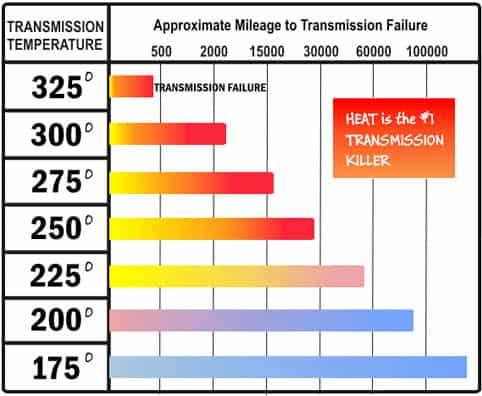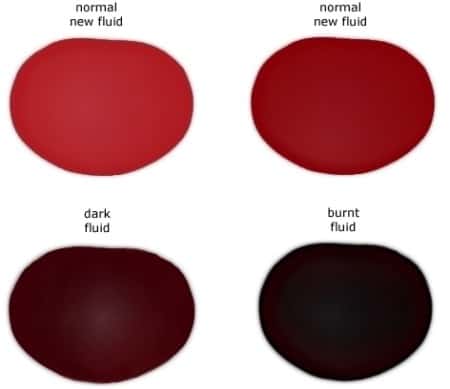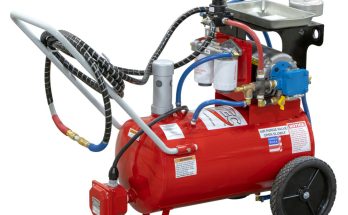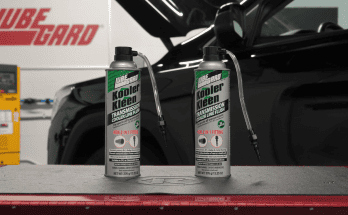Unsure if a transmission cooler it is worth adding to your vehicle? Don’t worry, you’re not alone. Most drivers are looking for ways to help prolong the life of their vehicle in one way or another. Adding a transmission cooler is a low cost, beneficial way to help ensure your vehicle’s transmission stays in great shape and keeps your car on the road longer.
There are a number of different types of transmission coolers that have their own unique functions and benefits. So whatever you need your vehicle to do, there is a transmission oil cooler that is best for your application.
If you have a basic daily driver, heavy duty truck or SUV designed for towing and hauling, a high performance street car, or any other vehicle with an automatic transmission, a transmission cooler can help keep your car running longer and more efficiently.
External Transmission Cooler Usage
While all automatic transmission equipped vehicles have a transmission cooler in their radiator, this might sometimes not be enough to properly cool your transmission fluid. Depending on how your vehicle is used, it would be best to think about adding an external transmission cooler if you encounter any of the following driving conditions.
- Drive in stop and go traffic for long periods of time
- Towing or haul heavy loads
- Live in a warm climate
While these conditions alone may not cause damage to your transmission, they can certainly speed up the process based on how harsh they are. For example, stop and go traffic will cause the transmission temperature to increase do to there being little to no air flow to the front of the car. Airflow is important to to cool the radiator, which is where the factory trans cooler is housed.
Most times, the factory transmission oil cooler can actually act as a heater based on being located inside the radiator where hot coolant is continually flowing in and out. With little airflow, the radiator needs to work harder to keep the engine cooler, thus is not able to effectively cool transmission temperatures.
Based on this, it would be smart to utilize an external transmission cooler to help allow the transmission fluid to cool more effectively outside of the radiator. While there are extra parts and understanding needed, adding an transmission cooler is simple. All you really need is space to mount the new cooler, extra transmission cooler lines, some additional fluid to make up for the added capacity, and mounting hardware.
Transmission Temp Before and After
After adding a transmission cooler to most vehicles will net an average 20-25 degree drop in trans temps. As pointed out before, transmission temp increases of 20-25 degrees higher than 175 dramatically decrease your fluid and overall transmission’s lifespan.
If you went from 185-190 degrees before installing a transmission cooler to somewhere in the 160-170 degree range after, then you will have certainly improved your transmission’s lifespan and potentially save yourself THOUSANDS OF DOLLARS on a new transmission.
Not bad for a minimal time and cost investment if you installed a transmission cooler yourself!
Keeps Transmission Fluid Temperatures Cooler
As we’ve learned by now, heat is the number one killer of transmissions. So based on this we need to understand how to keep transmission temperatures in check to prevent premature transmission failure. The normal safe transmission temperature range is about 170 – 190 degrees.
For every 25 degree increase, your transmission’s life can be cut drastically. The below transmission fluid temperature chart shows the ranges of temperatures and how long you can expect your transmission to last at that temperature.

As you can see in our transmission temperature chart, if your transmission tends to over heat, it will not last as long as you would like it to. It is recommended to install an external automatic transmission cooler to help your transmission work and be able to cool the fluid more efficiently. If you are unsure of what transmission you should use, check out our transmission cooler buyers guide.
Can You Over Cool A Transmission?
When it comes to over cooling a transmission, transmission fluid is not as sensitive to colder weather or cooling as you would think. Yes, over cooling transmission fluid may cause some issues such as gelling up and restricting flow through the cooler lines and cooler itself, but this isn’t too common. This may occur when temperatures are consistently below freezing. Most modern transmission fluids operate fine in these conditions since they have an anti gelling agent that prevents the fluid from getting too cold and causing issues.
If your transmission temps are too low and under 100 degrees for a sustained period of time for example, then this may cause issues. While transmissions run best when kept cooler than average and sin a safe range, they still need to get some heat to allow for proper transmission function in regard to shift characteristics and lubrication at a correct viscosity.
When installing a transmission cooler, it is always best to use a cooler based on what climate the vehicle drives in. For example, if you drive in stop and go traffic in the Texas heat, you don’t need to be concerned with over cooling the fluid. However, if you drive long distances up north in the winter where temps are below freezing, then it’s always recommended to keep the factory cooler in the radiator in the loop due to the exposure to the cold ambient temps.
Longer Lasting Transmission Fluid
Another benefit of utilizing a transmission cooler on your car, truck, or SUV is that it keeps the transmission fluid in better condition longer. Over time, transmission fluid breaks down, especially with excess heat. When transmission fluid starts to burn, it cannot do its job of being to properly engage gears and clutches.
Based on the transmission fluid color comparison, you want your transmission fluid to still look red, even after several thousand miles. Once it gets too dark, it needs to be changed. By keeping the fluid cooler, you can allow the transmission to run at a suitable operating temp and prolong the life of your fluid.

Prevent Burnt Transmission Fluid
Burnt transmission fluid is never good for long term transmission performance. Burning transmission fluid results in the formation of debris, and many other contaminants that will have a negative impact on your transmission. Burnt transmission fluid won’t be able to properly lubricate or cool down like it should based on it being broken down.
One the obvious effects of burnt transmission fluid is that it can cause overheating of your transmission. Because of this, it is best to use a transmission cooler to help preserve your transmission fluid. If you have right automatic transmission oil cooler for your car, truck or SUV, burnt fluid will not be a problem for you.
How To Tell If Transmission Fluid Is Burnt
So how do you know if your transmission fluid is burnt? The most obvious way to tell is well, it has a distinct burnt smell. The burnt fluid stench is very obvious, so it is easy to identify.
Another way to see if your transmission fluid is burnt is by looking at the color. Transmission fluid should be bright red with a sweet smell if is is still in good condition. However, the darker it gets, the more likely it is that the fluid will need to be changed, along with the filter.
By utilizing the right transmission cooler for your application will ensure that your transmission fluid will stay cooler and prevent burning. Burning transmission fluid will reduce its effectiveness to lubricate and cool, so it is recommended to check your fluid to ensure it is in good shape.




